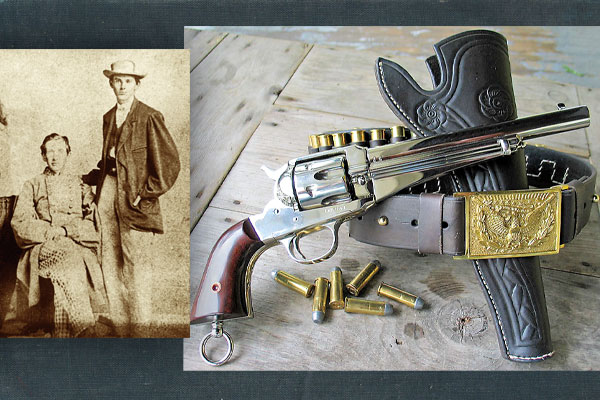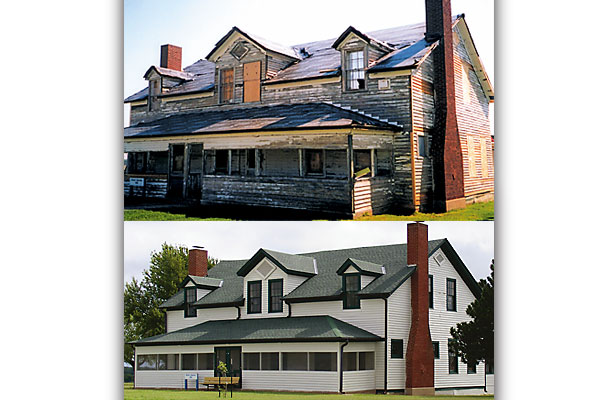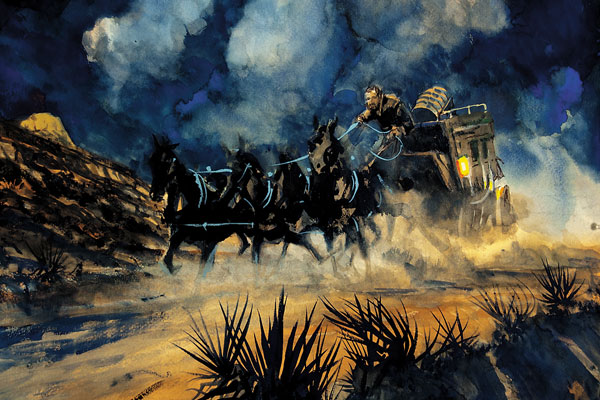 The jaundiced characterization of a dandified, belt-wearing, young riverboat hand is vintage Mark Twain—and a puzzle. After all, men seldom wore belts to hold up their pants in the 1800s. Belt loops were even rare on pants until the 1920s!
The jaundiced characterization of a dandified, belt-wearing, young riverboat hand is vintage Mark Twain—and a puzzle. After all, men seldom wore belts to hold up their pants in the 1800s. Belt loops were even rare on pants until the 1920s!
Men wore suspenders, attached to waistband buttons, to keep high-waisted, loose-fitting trousers from falling to the wearer’s ankles. Ditto the adjustable cinch straps on the backs of old-time britches. But belts? Not to hold up pants. Not even in the Wild West, where a wide, tooled belt is now a mark of a true Westerner.
Belts had another singular purpose in 1800s America, one which is made evident by the teenaged Jesse James. In a photo taken of him when he was 17, fresh into his career as a Confederate guerrilla, Jesse’s wide leather belt secures his pistols, not his pants. He had joined older brother Frank in a local militia in 1864. Affecting the demeanor of a hard-case Rebel bushwhacker, Jesse brandishes a Model 1860 Colt Army .44 cap-and-ball revolver, with two more Colts jammed behind the belt. Missouri-based raiders typically carried several of these guns in this manner during and after the Civil War.
Iowa saddlemaker Will Ghormley says the 1½-inch-wide belt Jesse wears looks to be a typical 1860 U.S. Army regulation sabre belt, made from medium-weight harness leather. Its black finish comes from soaking the leather in rusty water.
Jesse secured his belt with a plate buckle featuring an eagle with wings spread—a U.S. Army regulation officer’s buckle. Jesse, or one of his cohorts, had likely stripped the belt and buckle from the body of a dead Union soldier.
After the Civil War, Jesse cut his teeth as a train robber, but he wasn’t so showy with his firearms. He joined in with those pistol packers who parked their hardware in holsters on belts, worn under a morning jacket, frock coat, duster or other topcoat. The holsters and belts increasingly featured decorative designs stamped or carved into the leather—a legacy of holsters that were originally attached to saddles.
Ghormley, who makes replicas of famous gunbelts and holsters—including the rig of Frank James—says the floral and geometric decorations on many contemporary Western belts stem from early Mexican saddle designs: “Mexican saddles were making their way to Missouri saddlemakers and leather crafters once the Santa Fe Trail was established.”
The Aztec and Islamic art (influenced by 700 years of Islamic rule in Spain) seen on Mexican saddles birthed the basket weave patterns and oak leaf designs seen on vintage and modern Western leather products, Ghormley says.
By WWI, the Army had lowered the waist on its pants, added belt loops and replaced its ungainly suspenders with belts. Levi Strauss’s company followed suit and added belt loops to his riveted work pants in 1922—12 years after Mark Twain died. Levis initially retained the suspender buttons and the back cinch.
Had he been alive to see the change, Samuel Clemens, a.k.a. Mark Twain—who patented an alternative to suspenders in 1871—would probably have been the first to observe that a pessimist is a man who wears a belt and suspenders. If he also cinches up in back, he must be really paranoid.
G. Daniel DeWeese coauthored the book Western Shirts: A Classic American Fashion. Ranch-raised near the Black Hills in South Dakota, Dan has written about Western apparel and riding equipment for 30 years.






